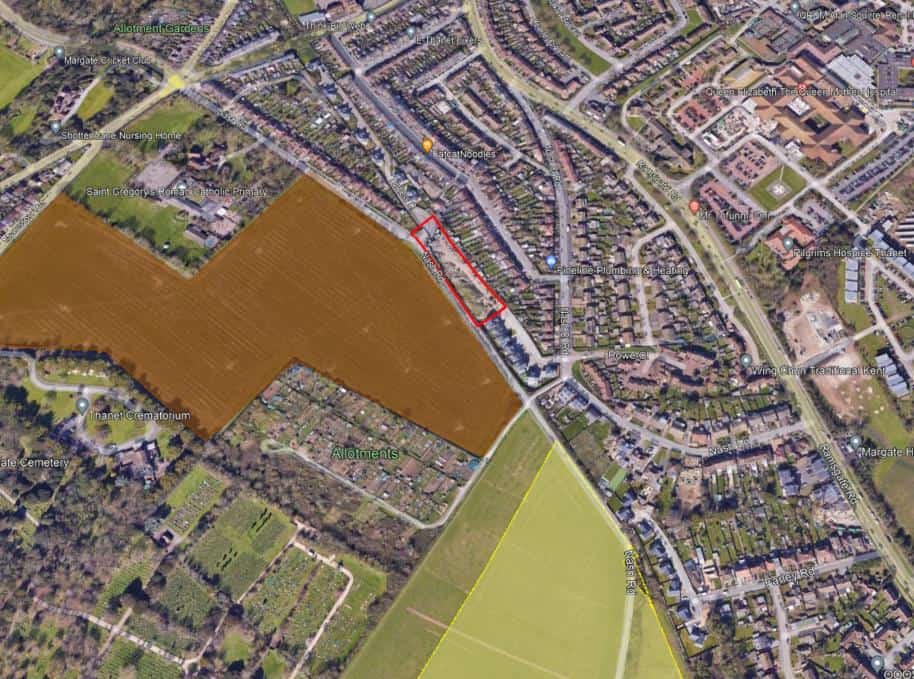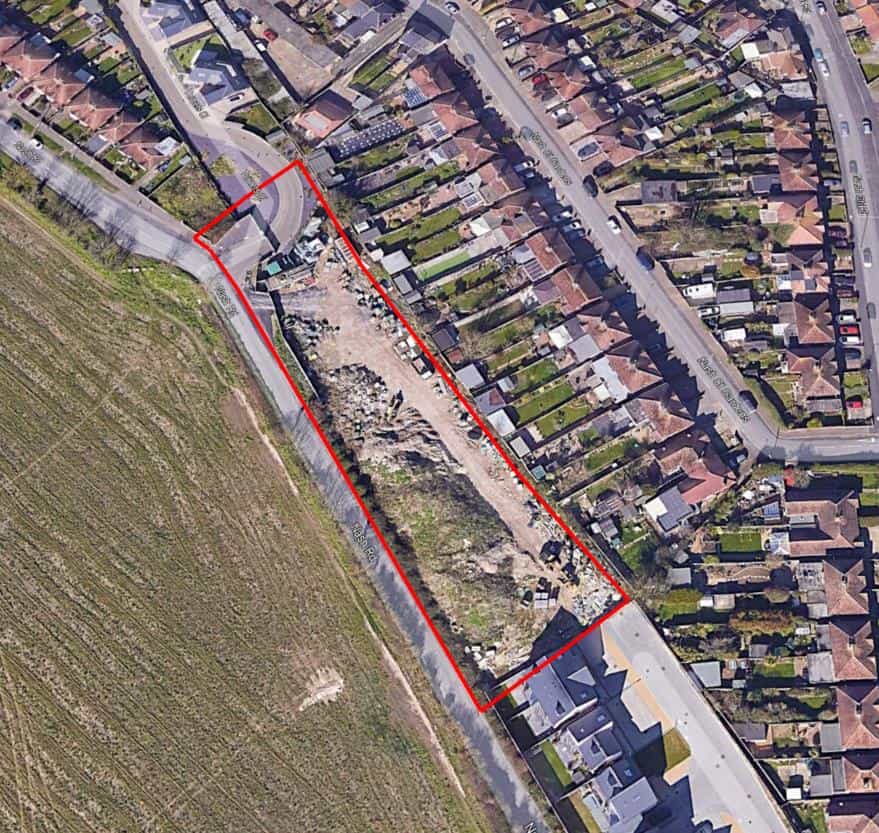
An application has been made to Thanet council to build nine new homes on a strip of land previously forming railway line from Margate to Ramsgate.
The homes would comprise three 4 bedroom houses and six semi-detached 3 bedrooms houses on the old line at Nash Road which served Margate Sands station until its closure in 1926.
The development – called The Sidings- follows the layout of homes in Eliot’s Close and Turner’s Close which were built after being granted approval in 2017.
It will also be adjacent to a 250 home development which provoked almost 30 objections when it first came before Thanet council in 2017 and then created further concerns in 2020 when a request to cut the affordable housing from 30% to 18% was made. That application was eventually granted permission last year and includes a new link road between Nash Road and Manston Road, with new roundabout on Manston Road for access into the site (and new service road for properties on Manston Road) and alteration to Nash Road to bring road directly through the site.

The nine-home application has been made by Thanet Property Enterprise II Ltd. Documents submitted to the council say it will use energy efficient design and “contribute to producing a high standard of accommodation with access to private green space for all current and future occupants.”
The proposal would introduce new shrub, hedge, and tree planting either side of the Turner Close/Nash Road junction and have on-plot parking for two cars (with 1 x electric charging point per dwelling). There are an additional two visitor spaces provided.

Submitted documents say: “The need for additional housing is keenly felt across much of the country, and particularly within the context of Thanet, there has been an historic pattern of under delivery of housing against relevant targets and there is an acknowledged deficit in the five-year supply of housing land.

“The development is deliverable in the short term by an SME4 and would make a positive and sustainable contribution towards the district’s housing supply – delivering clear economic, social, and environmental benefits.”
The railway line served the Margate Sands Station was first proposed in 1841 by the South Eastern Railway (SER).
The station opened on 1 December 1846 without ceremony and without Royal Ascent. The line took a convoluted route to reach Margate, running via Ashford, Canterbury and Ramsgate, and requiring a reversal at the latter.
To save costs, the line was single-track beyond Canterbury and the original station building was a simple wooden structure.
Shortly after opening, a passing loop was added on the line to alleviate congestion. A permanent building opened in 1859, costing £3,900. A chord was built at Ramsgate in 1863, which meant that trains could travel direct to the station from Canterbury without having to reverse from Minster. A refreshment room opened in 1873. The station’s name was changed to Margate Sands on 1 June 1899.
The station struggled with competition from rival railways, particularly the London, Chatham and Dover Railway (LCDR), which constructed a line around Thanet to Ramsgate Harbour in 1863.
The Margate Sands station closed on 2 July 1926, as part of Southern Railway’s plan to connect up the separate railway lines around Thanet built by the SER and others.

In 2017 the former railway crossing keeper’s cottage on Star Lane was demolished ahead of a scheme to replace it with 12 flats.
The old Gate House cottage was once occupied by the person who operated the level crossing gates over the former Ramsgate Town to Margate Sands railway branch line.
A decision on the nine home application is yet to be made. Proposals can be viewed on the Thanet council planning portal, reference F/TH/23/0194

